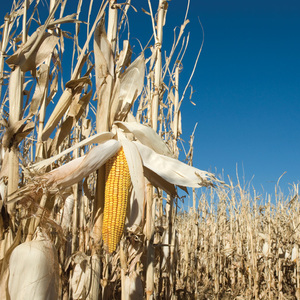USDA maintains outlook for 2020-'21 corn use in ethanol

February 9, 2021
BY Erin Krueger
The USDA maintained its forecast for 2020-’21 corn use in ethanol in its latest World Agricultural Supply and Demand Estimates report, released Feb. 9. The outlook for corn exports was increased, while the forecast for ending stocks was reduced.
The USDA increased its forecast for U.S. corn exports by 50 million bushels, reflecting historically large corn purchases by China. With no other changes, U.S. corn ending stocks are lowered 50 million bushels from last month. The season-average corn price received by producers is raised 10 cents to $4.30 per bushel.
The USDA has maintained its forecast that 4.95 billion bushels of corn will go to U.S. ethanol production in 2020-’21, up from 4.852 billion bushels in 2019-’20, but down from 5.378 billion bushels in 2018-’19.
Foreign corn production is up fractionally, with an increase for South America more than offsetting a reduction for Paraguay. For South Africa, production is raised based on higher indicated area. For Brazil, the corn production forecast is unchanged as greater area is offset by a reduction in yield. Slow second-crop planting progress in the center-west dampens yield prospects, but very favorable prices boost area expectation, according to the USDA.
Advertisement
Major global trade changes for 2020-’21 include higher projected corn exports for the U.S., India, and South Africa. For 2019-’20, Argentina and Brazil corn exports are raised for the local marketing year ending February 2021 based on larger-than-expected late-season shipments. Corn imports for 2020-’21 are increased for China, with partly offsetting reductions for the EU-27+U.K., South Korea, Japan, India, Saudi Arabia and Turkey. Foreign corn ending stocks for 2020-’21 are up relative to last month, mostly reflecting increases for China, South Africa, and Mexico that are partly offset by reductions for Argentina and Brazil. Global corn ending stocks, at 286.5 million tons, are up 2.7 million from last month.
Advertisement
Related Stories
CountryMark on July 22 celebrated the completion of more than $100 million in upgrades at its refinery in Indiana, including those related to soybean oil storage. The facility produces renewable diesel via coprocessing technology.
ATOBA Energy and Air Moana are partnering to implement scalable solutions for the supply of SAF. The collaboration aims to ensure long-term SAF availability while supporting local initiatives to develop sustainable fuel production in Tahiti.
While final IRS guidance is still pending, the foundation of the 45Z program is well defined. Clean fuel producers should no longer be waiting; they can now move forward with critical planning and preparation, according to EcoEngineers.
Neste Corp. on July 24 released second quarter results, reporting record quarterly renewable product sales volumes despite weaker margins. SAF sales were up nearly 80% when compared to the first quarter of 2025.
Valero Energy Corp. on July 24 released second quarter results, reporting a profitable three-month period for its ethanol segment. The renewable diesel segment posted a loss, but the company’s new sustainable aviation fuel (SAF) unit operated well.
Upcoming Events










